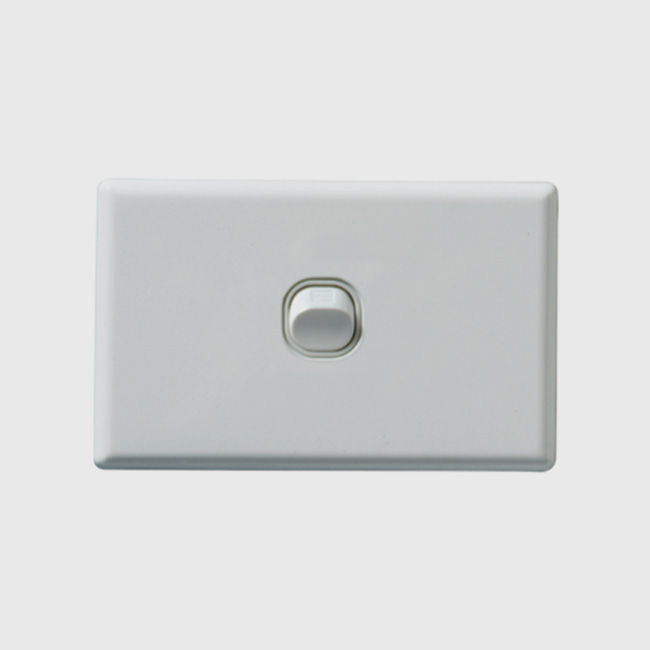Views: 0 Author: Site Editor Publish Time: 2025-08-18 Origin: Site








Have you noticed signs of wear or damage in your junction box? It’s essential to address this before it leads to electrical hazards. Replacing a junction box can seem daunting, but with the right tools and knowledge, it’s a manageable DIY project.In this post, we’ll discuss the steps involved in safely replacing your junction box, from turning off the power to installing the new one. You’ll learn how to ensure proper wiring, choose the correct box, and follow essential safety precautions.

A junction box is a crucial component of your home's electrical system. It serves as a protective enclosure that houses electrical connections, keeping wires safe and organized. Its primary purpose is to protect electrical wires and prevent damage from external factors like moisture, dust, and accidental contact.
Junction boxes also play a role in ensuring proper grounding of electrical circuits. Without them, electrical connections could pose serious safety risks.
Over time, junction boxes can wear down or become damaged. Here are some common signs that it may be time to replace yours:
Cracks or Discoloration: Visible cracks or signs of discoloration on the box may indicate that it’s no longer sturdy.
Loose Fittings: If the box is coming loose from its mount or the cover doesn’t fit tightly, it may need to be replaced.
Exposed Wires: Any exposed or frayed wires inside the box are a major safety hazard and a clear sign of damage.
When assessing whether your junction box is outdated or faulty, check for:
Physical damage: If it shows signs of wear or physical degradation.
Overcrowding: Boxes overloaded with wires can cause overheating and short circuits.
Old Wiring: If the box contains outdated or brittle wires, it’s time for an upgrade.
A damaged or outdated junction box can lead to electrical hazards. It’s important to replace it when necessary to ensure safety and proper electrical functioning.
Replacing a junction box requires a few basic tools to ensure the job is done correctly and safely. Here’s what you’ll need:
Screwdrivers (flat-head and Phillips)
You’ll need both types of screwdrivers to remove the old box and install the new one. A flat-head works for prying, while a Phillips screwdriver is great for screws.
Wire Strippers
These are used to strip the insulation off the wires, exposing the metal beneath. You’ll need to strip the wire ends before making connections in the new box.
Voltage Tester
Safety first! A voltage tester will help you verify that the power is off before you start working. It’s essential to avoid electric shock.
New Junction Box (Plastic or Metal)
Choose a box that matches your wiring setup. Plastic is common for lighter loads, while metal is used for more demanding applications.
Electrical Tape
This will help secure your wire connections and provide extra protection from loose wires inside the box.
Wire Connectors (Wire Nuts)
Wire nuts are used to twist and secure the wire connections together. Make sure to have a few sizes to match different wire gauges.
Safety Gloves
Protect your hands while handling wires and tools. Gloves prevent cuts and burns, especially when dealing with sharp edges or live wires.
Once you have these tools ready, you’ll be set to safely and efficiently replace your junction box.
Replacing a junction box is a straightforward task if done correctly. Here’s a simple, step-by-step guide to help you through the process.
Why Turning Off the Power is Crucial
Turning off the power is the most important step. It ensures you won't get an electric shock while working on the box. Always double-check before touching any wires.
How to Find the Correct Circuit Breaker
Head to your home's electrical panel. Identify which breaker controls the circuit you’re working on. If unsure, you can flip each breaker until you find the correct one.
Checking for Power with a Voltage Tester
Use a voltage tester to verify the power is off. Hold the tester near the wires inside the junction box. If it doesn't light up, you're safe to proceed.
Unscrewing the Cover Plate
Start by unscrewing the cover plate of the old junction box. It’s usually secured with two screws, so use a flat-head or Phillips screwdriver to remove them.
Disconnecting the Wires
Carefully disconnect the wires from the old box. Make a note or take a photo of the wiring configuration before disconnecting. If wires are frayed or damaged, now is the time to replace them.
Removing the Old Junction Box
Check how the old box is secured. If it’s screwed, unscrew it; if it’s nailed or clipped, gently pry it off. Remove the box from the wall or ceiling once it's free.
Choosing the Right Replacement Box
Select a box that fits the same size and type. A plastic box works for low-load circuits, while a metal box is better for higher loads. Ensure it matches your wiring setup.
Mounting the New Junction Box
Position the new box where the old one was. Secure it with screws or clips. Make sure it’s flush with the wall or ceiling to avoid gaps that can compromise safety.
Color-Coding the Wires
Match each wire color: black to black, white to white, and green or bare to green or bare. This ensures the connections are correct and safe.
Using Wire Connectors (Wire Nuts)
Twist the wires together using a wire nut. The connector should hold the wires tightly, preventing them from coming loose. Make sure the connections are secure.
Securing Connections with Electrical Tape
Wrap electrical tape around the wire nuts for extra security. This step helps ensure the connections are safe and insulated.
How to Arrange Wires Neatly Inside the Box
Arrange the wires neatly inside the box so they don't stick out. This will prevent any exposed wires and make room for the cover plate.
Securing the Cover Plate
Once the wires are arranged, place the cover plate over the junction box. Screw it in place securely to keep the wires protected.
Restoring Power and Testing
Go back to the circuit breaker and turn the power on. Test the circuit by flipping a switch or turning on a light to make sure everything is working correctly.
How to recognize the signs of a damaged or old junction box
If you notice cracks, discoloration, or loose fittings, your junction box may be damaged. Exposed wires or signs of wear also indicate it's time for a replacement.
Should you replace a junction box if it’s still working but looks outdated?
Yes, even if it works fine, an outdated box can pose risks. It’s better to replace it before it fails, especially if it doesn't meet modern safety standards.
Pros and cons of DIY vs. hiring a professional electrician
DIY replacement can save money but comes with risks, especially if you're not familiar with electrical work. Hiring a professional ensures the job is done safely and up to code.
Safety tips for handling electrical work at home
Always turn off the power, use a voltage tester, and wear safety gloves. Never rush the process, and make sure you understand each step before proceeding.
When to call an electrician for help
If you're unsure or uncomfortable working with electricity, call a licensed electrician. It's always best to get expert help when in doubt.
Comparing plastic vs. metal junction boxes
Plastic boxes are lighter, easier to install, and suitable for low-load applications. Metal boxes are sturdier and better for high-load circuits or when grounding is needed.
Guidelines on choosing the right type based on your environment
Use plastic boxes in dry, residential areas, and metal boxes in environments exposed to moisture or higher electrical loads. Choose the one that suits your wiring needs.
Calculating the Size:
To calculate the correct size, count the number of wires entering the box. Multiply this number by 2 (for 14-gauge wire) or 2.25 (for 12-gauge wire). Then, add space for the ground wire.
Using a Fill Capacity Chart
Use a fill capacity chart to determine the appropriate size box for the number of wires. A larger box provides more space for safe, organized wiring.
Understanding the need for electrical permits in your area
Some areas require a permit for electrical work. Permits ensure the work meets local safety codes.
How to check local building authority requirements
Contact your local building authority to check permit requirements. It’s always better to check before starting the work to avoid potential issues.

Proper grounding of your junction box is crucial to prevent electrical hazards. If you’re using a metal box, you must connect the box to the ground wire of the circuit. This ensures any stray electrical current has a safe path to flow through, reducing the risk of electrical shocks or fires.
For a plastic box, grounding may not be necessary, but you still need to ensure the wiring is grounded properly. Always double-check your connections before securing the box in place.
Electrical codes are set to ensure safety and reliability. When replacing a junction box, it’s important to follow local electrical codes. These codes dictate the type of box you need, the correct wire gauge, and how the wires should be connected. Failing to comply could lead to electrical malfunctions or safety violations.
Check your local regulations before starting your project to make sure everything is up to code. If you're unsure, consider hiring a professional to guarantee the installation meets all necessary requirements.
If you’re upgrading your system to handle more electrical devices, you may need a larger, more robust junction box. Larger boxes allow for extra wiring and prevent overheating, which could otherwise lead to short circuits.
When choosing a box for high-load applications, opt for a metal box designed to handle more power. Make sure the box is rated for the amperage your system will carry. Upgrading to a larger box can help ensure your electrical system remains safe and functional under heavier loads.
Replacing a junction box involves turning off power, removing the old box, and installing the new one. Proper wiring, grounding, and compliance with electrical codes are essential to avoid hazards. Following these steps carefully helps prevent accidents and ensures your home’s electrical safety. Always prioritize safety and seek professional help if needed.
A: No, it's crucial to turn off the power to avoid electrical shock and ensure safety during the replacement.
A: Replacing a junction box typically takes 1-2 hours, depending on experience and the complexity of the setup.
A: An outdated junction box can cause electrical hazards, including overheating, short circuits, or fires due to worn-out components.
A: If you're unfamiliar with electrical work, it’s best to hire a licensed electrician to ensure safety and code compliance.